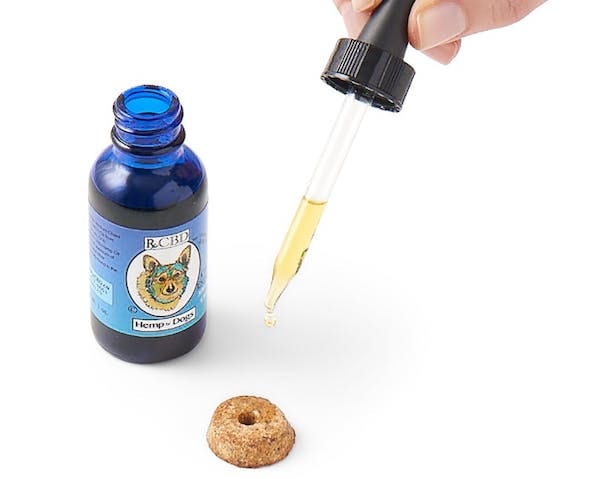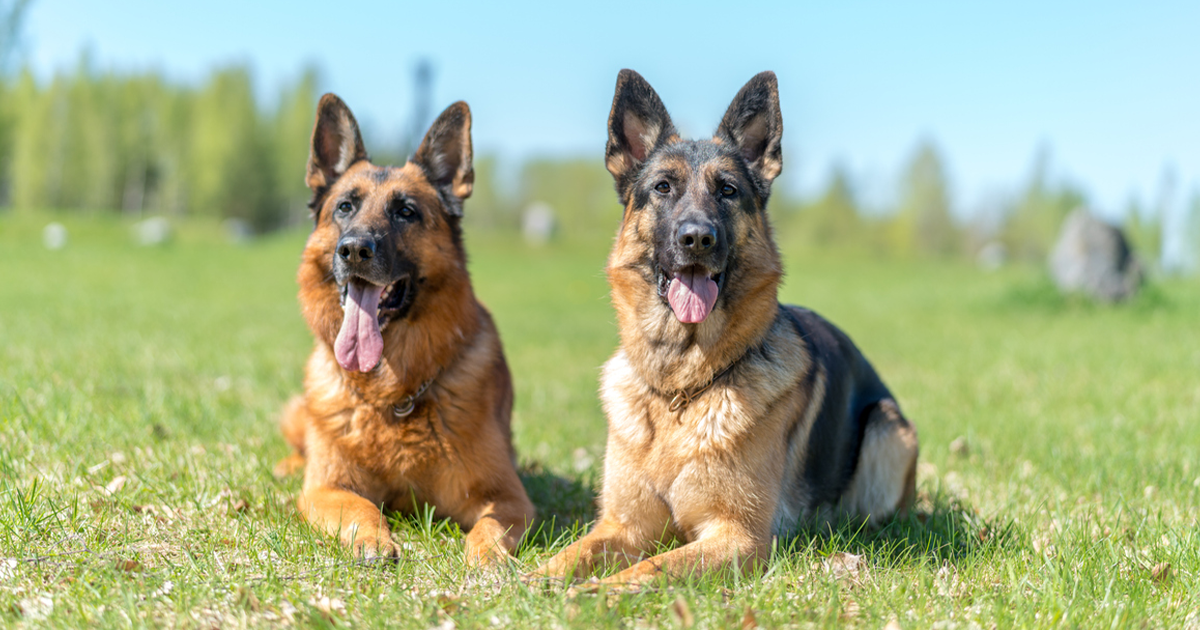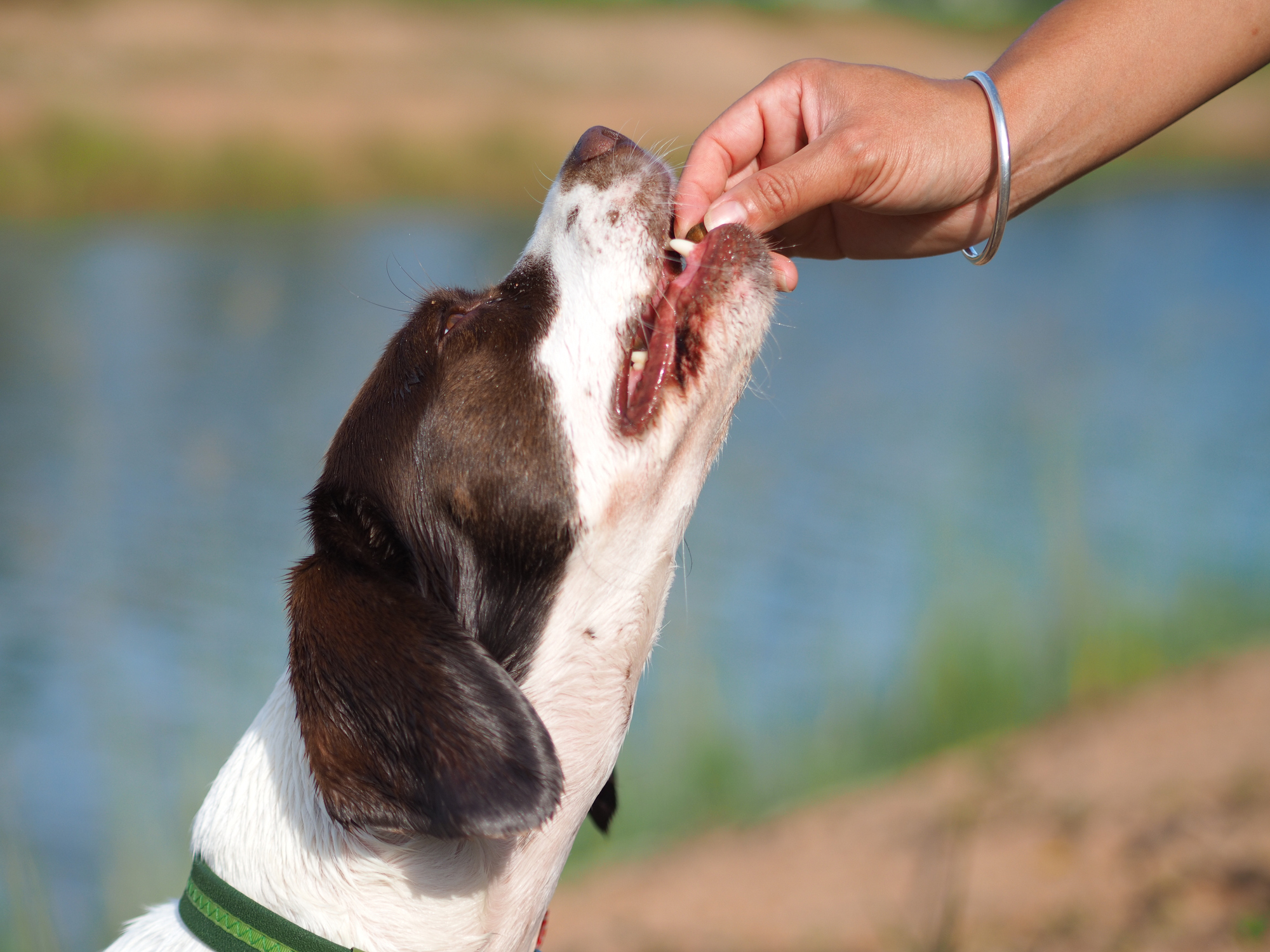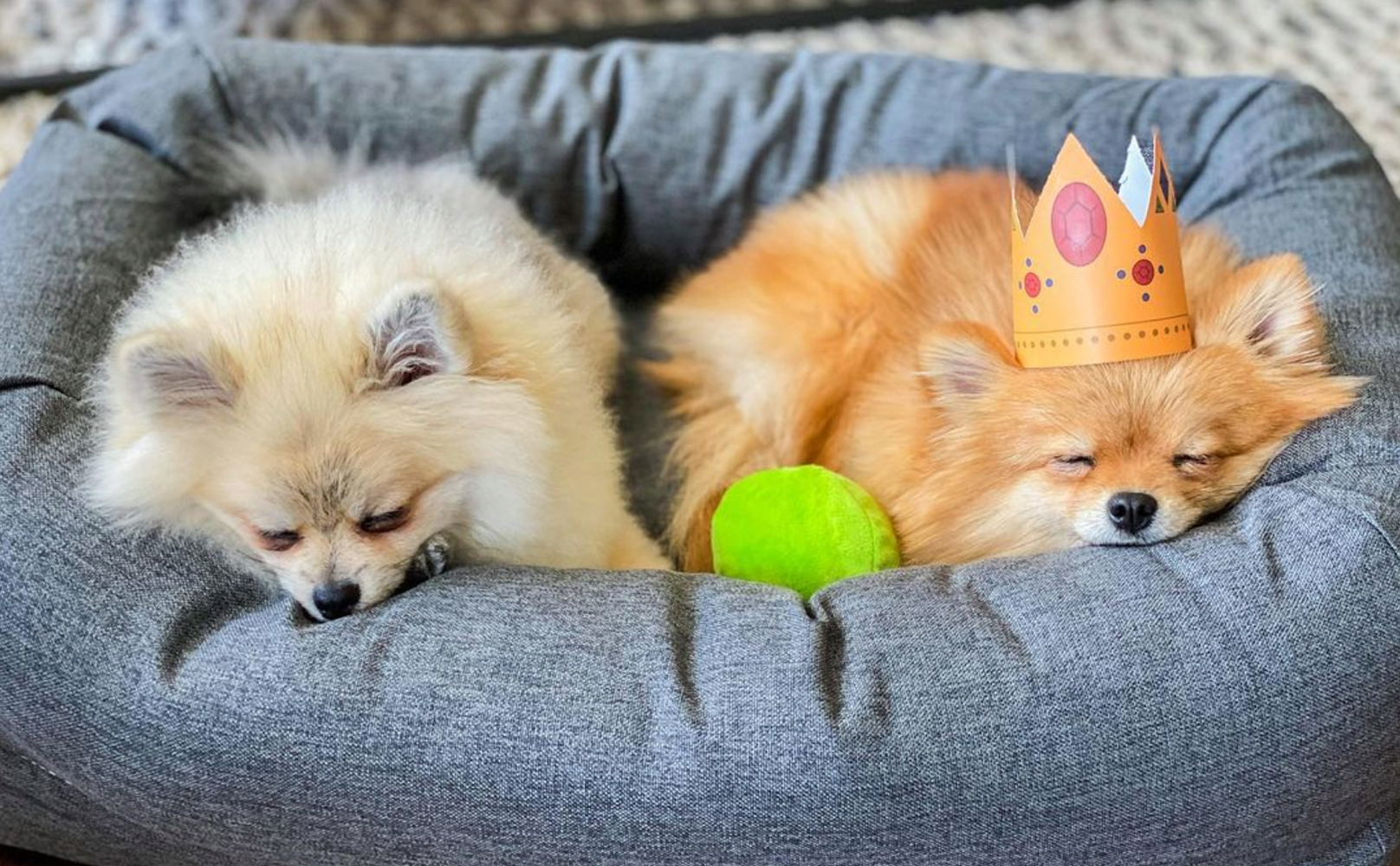Just like humans, dogs may become anxious due to a variety of factors. The most common reasons for anxiety in dogs include:
- Fear (e.g., thunderstorms, fireworks, cars, groomers)
- Separation anxiety (e.g., separation from owner, being left alone)
- Decline in health and cognitive functioning due to aging
- Illness, injury, pain
How Can I Tell If My Dog Has Anxiety?
How do we know if our dogs are suffering from anxiety if we can’t speak canine? Learn to read dog body language!
Dogs show anxiety in a variety of physical behaviors; unfortunately, there isn’t a single symptom that indicates anxiety (wouldn’t that be easy?). Rather, anxiety in dogs typically results in a combination of symptoms. These are changes in your dog’s normal behavior, ranging from subtle to intense, that are triggered by anxiety.
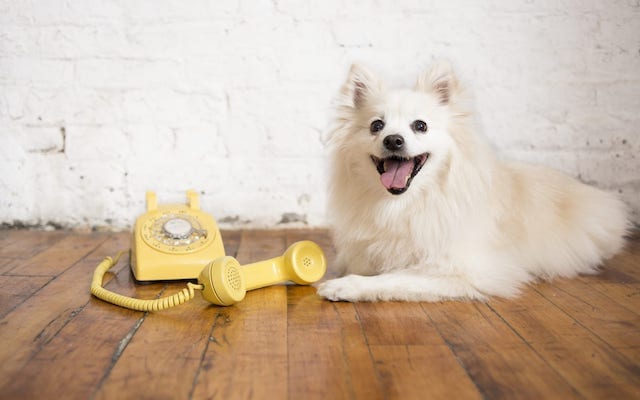

Typical symptoms of dog anxiety include:
- Seeking comfort or affection
- Excessive licking or chewing
- Hiding, withdrawing searching for solitude
- Drooling
- Panting
- Shaking, trembling
- Tucking tail between legs
- Pacing, restlessness
- Repetitive or compulsive behaviors
- Excessive barking/howling
- Attempting to escape confinement (e.g. kennel, barrier)
- Aggression
- Defecating or urinating
- Destructive behavior (e.g. tearing furniture)
- Depression
How Can I Prevent My Dog From Becoming Anxious?
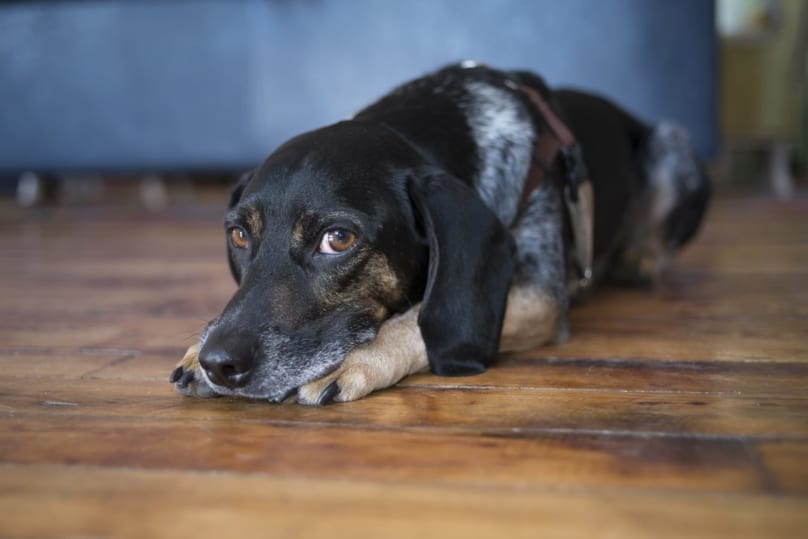

Learn Dog Body Language
Though you may talk to your dog, your dog can’t talk back to you. (Sorry to burst that bubble…) Since dogs don’t communicate like we do, they rely on nonverbal communication. Meaning, dogs express their emotions and needs through physical behaviors. Familiarizing yourself with the physical signs of dog anxiety can help you know when your dogs is feeling uncomfortable, scared, or anxious. In recognizing this, you can provide comfort and help your dog avoid negative experiences which may lead to more anxiety.
Socialization
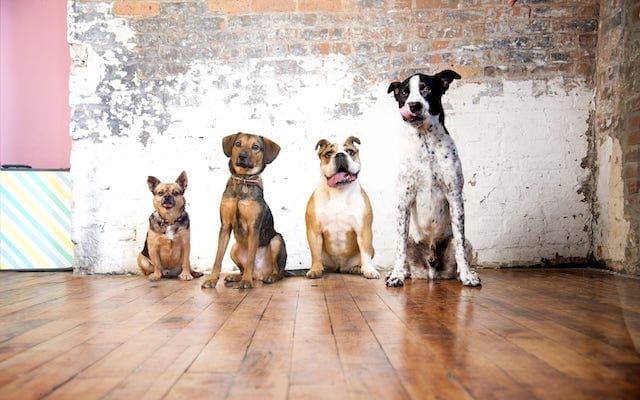

Exposing your dog to the many sights, sounds, and smells of the world will decrease the likelihood of him or her developing anxiety. Introduce your dog to new people, experiences animals, places, and objects when possible. Through this, your dog will (a) become comfortable with being introduced to new experiences and (b) become comfortable with things that are similar to what you have exposed them to (e.g., cars, children). This can help prevent your dogs from having exaggerated fear or anxiety responses to unfamiliar things.
Obedience Training
According to the AKC, it is easier to socialize a well-trained dog than one without training. The training process helps build trust between you and your dog and, in turn, strengthens your bond. With this trust and bond, your anxious dog will likely find comfort in you. Additionally, training offers the optimal opportunity for your pup to become acquainted with other dogs in a safe, controlled environment with experts at hand. This can help your take your pup from socially anxious to social butterfly.
What Can I Do To Relieve My Dog’s Anxiety?
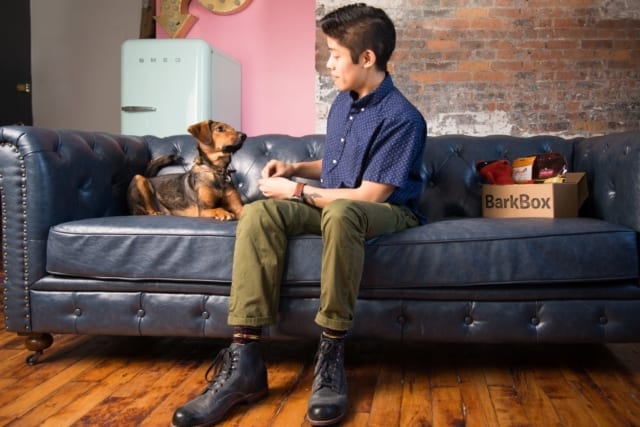
Exercise
A stimulated dog (one who has ample opportunity to exercise, socialize, explore) is far less likely to destroy furniture and commit other destructive offenses than a dog cooped up and alone. So, engaging your dog, physically and mentally, is a win-win situation for you! You can achieve this by going on walks with your pup, playing fetch, providing mentally stimulating dog toys, talking with your dog, and not leaving your dog alone for long periods of time.
Get Musical
Music developed specifically for those special canine ears can sometimes soothe an anxious dog. Playing a peaceful tune when you’re not around can help your separation anxiety-ridden dog find their Zen.
Mutt Massages
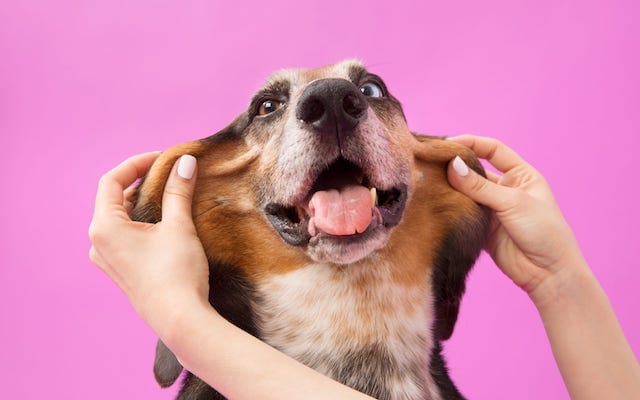

So, you’ve already got the music, let’s give your dog the whole spa-like experience with massages. Who doesn’t feel calm at a spa? Physical contact is thought to help dogs relieve fear, stress, and anxiety. So, gently petting your dog, in the right spots, in the right way, can help them wind down.
Ask A Vet
If your dog’s anxiety appears particularly problematic, significantly distressing, or results in aggression, your local veterinarian is there to help. Vets are wonderful resources for helping you and your canine companion work through dog anxiety. In consulting with a vet, you both can determine the reasons for your dog’s anxiety, what triggers the anxiety, rule out medical conditions that may be causing anxiety, and create a treatment plan.
Treat Your Dog With Natural Supplements
The final touch to creating spa-like tranquility for your dog could be a natural supplement. Check out the following options:
Bark Calming Supplement: It’s veterinarian-formulated, made with all natural ingredients (tryptophan, lemon balm, and green tea), and it comes in the form of 120 soft chews. Basically, it looks and tastes just like delicious treats, and it could really help soothe your dog in their time of need. ($24.99.)
Bark CBD Extract: This holistic remedy is made from MCT, organic coconuts, and co2 extracted high CBD hemp oil, and it’s been known to help with all forms of anxiety – but also arthritis, nausea, inflammation, and other physical or emotional pain. It contains no THC (<0.1%) and will not make your pup feel “buzzy” or “high.” ($69.30.)
Bark CBD Chicken Biscuits: These handcrafted treats are made with premium, human-grade ingredients including full-spectrum CBD hemp oil and are available for both small and large dogs. They’re a holistic, natural product for anxiety, arthritis, nausea, inflammation, and other physical or emotional pain. They contain no THC (<0.1%) and will not make your pup feel “buzzy” or “high.” (Starting at $24.30 for 4 oz. jar of 25 treats.)
(NOTE: It typically takes more than a single dose of CBD – and sometimes up to two weeks’ worth – to see results.)


